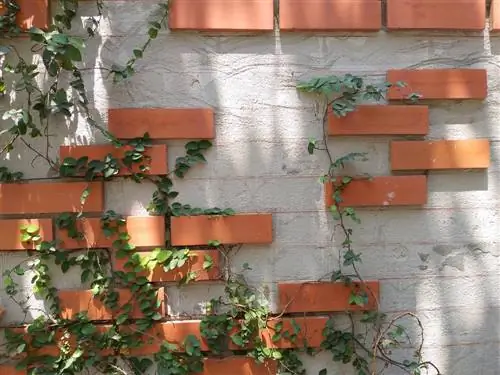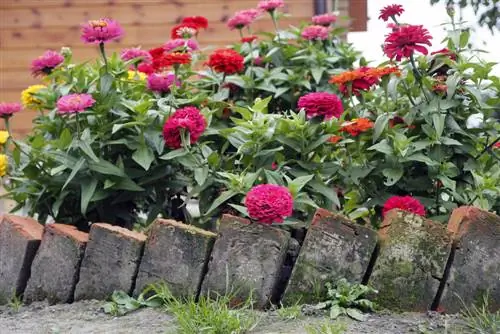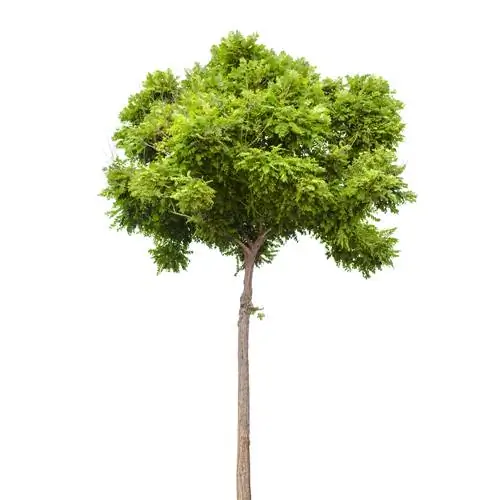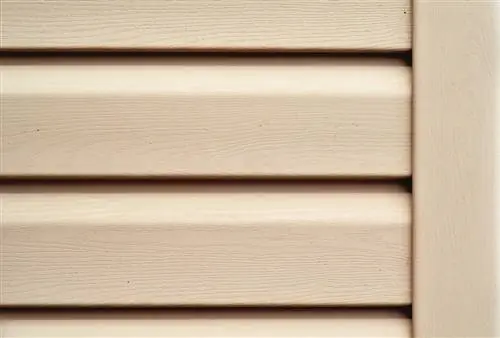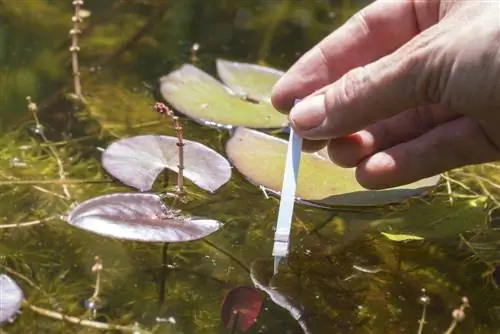- Author admin [email protected].
- Public 2023-12-16 16:46.
- Last modified 2025-01-23 11:22.
Clinker tiles are significantly more resistant to driving rain and strong winds than, for example, plaster. At the same time, the stones are ecologically very compatible because clinker bricks are made from natural raw materials such as clay, loam or clay-containing masses and are recyclable. You can also clinker a garden wall later. You can find out how to do this in the following article.
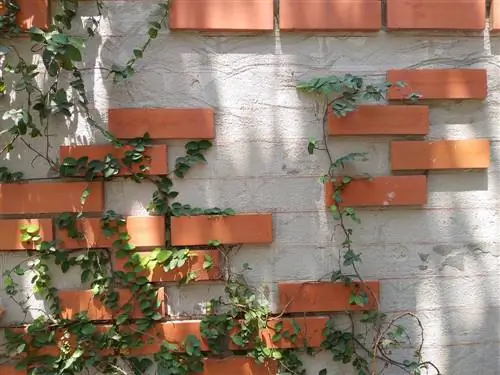
Make foundation
For clinkering, you absolutely need a foundation that must also be frost-proof. To do this, dig an 80 centimeter deep trench around the stone wall and fill the ground with gravel, which you compact well.
Reinforcement made of iron mats is recommended. Then pour the concrete into the pit and compact it with a tamping foot. Allow this base to dry thoroughly before you start clinking.
Mounting clinker bricks
The less experience you have with building walls, the smoother the clinker bricks you choose should be. The reason: Cement that accidentally lands on the stones quickly settles in open-pored stones and leaves an unsightly, gray haze.
When building the clinker wall, proceed as follows:
- Lay a strip of sealing membrane on the foundation.
- Mix the facing mortar that is tailored to the absorbency of the clinker.
- Always process the stones from several packages at the same time. This creates the characteristic, natural play of colors.
- Cut the required sections with the diamond disc (€19.00 on Amazon) of the angle grinder.
- Be sure to wet absorbent clinker bricks beforehand.
- Inexperienced people should lay the clinker bricks together. This means that the joint between the stones in the second row is centered above the first stone.
- The transverse joints should be ten to twelve millimeters thick, depending on the thickness and format of the clinker bricks.
- If cement squeezes out of the gaps, wipe off immediately with clean water and a brush.
Grouting
Let the clinker brick wall dry thoroughly for a few days. The joints are then filled with joint mortar using a narrow joint trowel. Press the material in well and pull it smooth.
Strips instead of clinker bricks, the uncomplicated alternative
If you want to make your work easier, you can stick straps onto a well-preserved garden wall. To do this, the wall is first cleaned thoroughly. It continues as follows:
- Press the corner straps into the special adhesive that has been combed through with a notched spatula.
- Orientate yourself using the stretched masonry cords and attach all the straps.
- Finally, the stones are grouted using a joint iron. This prevents the clinker brick slips from becoming dirty.
Tip
You no longer have to renovate clinkered walls. An example of longevity: As early as the 19th century, many sewer networks were fitted with clinker bricks. These are still fully functional today, dirt and algae cannot harm the surfaces.

